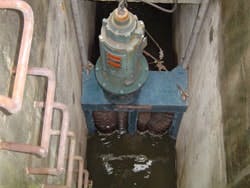Protecting Pump Stations
The Wastewater Treatment Division of the city of Wilmington, N.C., operates two wastewater treatment plants and a sewage collection system that includes 370 miles of gravity line and 25 miles of pressurized sewage force main. Each day, 14.7 million gal of wastewater, transported with the help of 31 pump stations, are collected, treated and discharged back into the Cape Fear River.
Managing the city’s wastewater system efficiently and effectively is an ongoing challenge, since the division must meet the needs of a large population and comply with stringent discharge regulations. In particular, pump stations can be a headache to maintain. Pump jamming, clogs and blockages caused by rags, wood, plastics, rocks and trash can quickly create conditions for sewer backups and spills.
Several Taskmaster Titan Duplex (TM 14002) units with stainless steel housing were included in recent upgrades to the pump stations. “Since we’re on the coast, we have a fairly salty environment, which contributes to corrosion,” Vogt said. “We like to use corrosion-resistant materials in our machinery because that’s one less thing to worry about.” When asked how often the units require repairs or extensive maintenance, he said, “I can’t comment because except for periodic upkeep, we haven’t had to do much.”
The grinder combines a powerful channel-grinding capability with high-flow capacity and low headloss. It has twice the cutting area of a single-shaft grinder for higher flow and wider channel applications. The design employs two counter-rotating shafts, but its intermeshing cutter stacks have two different diameters. One stack has an opening that is much larger than the other, a feature that provides more efficient feeding and reduction of bulky solids and allows greater flow to pass through.
The result is superior performance in both grinding and liquid handling. The finely ground output provides excellent protection of pumps, filter presses and other downstream equipment. With its massive array of cutting edges, cutter life and unit strength are enhanced.
“The Taskmaster grinders are rugged, dependable machines and incidentally, cost considerably less then other competitors,” Vogt said. “They have made our job a whole lot easier, and we are very pleased.”
